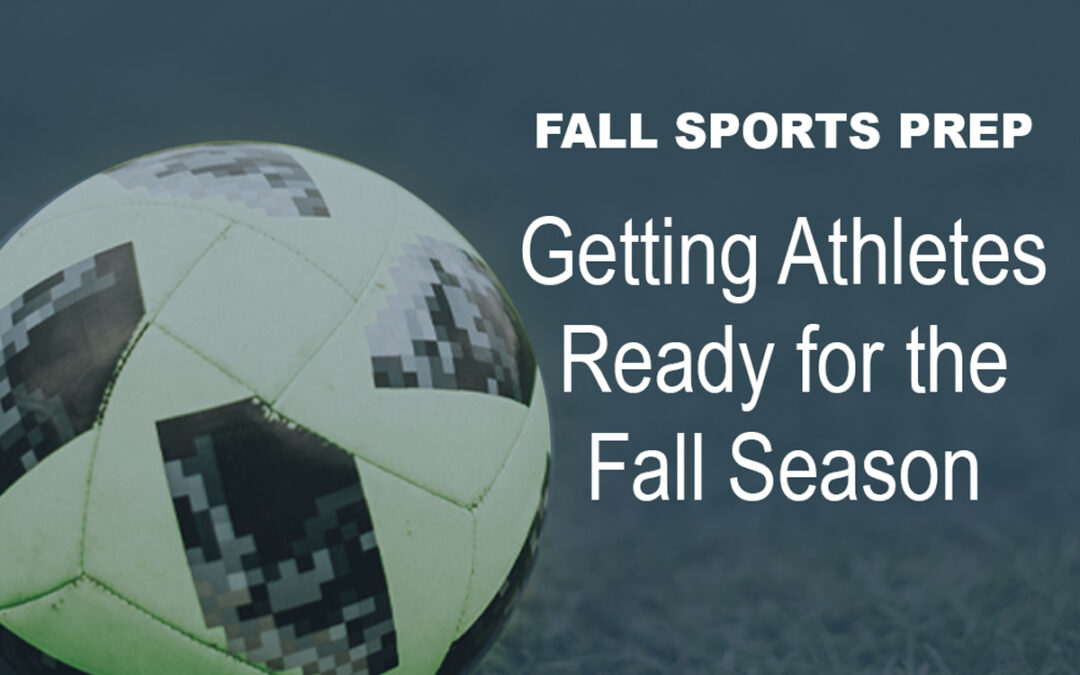
Back to School Sports Prep
Back to School Sports Prep:
Getting Athletes Ready for the Fall Season
As summer winds down many young athletes have already started their practices for fall sports. Football, soccer, cross country, field hockey, cheerleading, and even marching band all come with their own physical demands—and starting a new season without the right preparation can put any athlete at risk for injury.
Here are a few key tips to make sure they’re ready to start the season safely and confidently.
1. Build a Strong Foundation
During the off-season, it’s common for athletes to lose some of their sport-specific conditioning. Jumping straight into practices and games without preparation can strain the body. Encourage your athlete to:
-
Focus on core strength and stability — a strong core supports proper movement and reduces risk of back and hip injuries.
-
Work on lower body strength — squats, lunges, and single-leg exercises help protect knees and ankles.
-
Maintain flexibility with dynamic stretching before activity and static stretching afterward.
2. Prioritize Proper Warm-Ups and Cool-Downs
Young athletes often want to jump right into drills, but a rushed warm-up can set the stage for injury. A good routine should include:
-
Dynamic warm-up movements like high knees, butt kicks, or skipping to activate muscles.
-
Sport-specific drills to get the body moving the way it will in practice or competition.
-
Cool-down stretching to restore mobility and decrease post-practice soreness.
3. Don’t Ignore Rest and Recovery
Excitement at the start of a season can lead to overtraining. Growing bodies need recovery time to avoid stress injuries. Remind your athlete to:
-
Listen to their body and speak up about aches or pains.
-
Get enough sleep—teens need 8–10 hours for proper recovery.
-
Fuel with proper nutrition & hydration including protein, whole grains, & fruits.
4. Address Small Issues Before They Become Injuries
Minor pain, muscle tightness, or decreased flexibility can worsen quickly during a demanding sports schedule. You should consult a Physical Therapist right away to help:
-
Identify movement imbalances.
-
Improve mechanics for running, jumping, and cutting.
-
Provide targeted exercises to strengthen vulnerable areas.
Getting ahead of these small issues can keep athletes on the field and injury free.
5. Mental Readiness Matters
The transition back to school can be stressful. Balancing academics, sports, and social life is a lot for young athletes. Encourage them to:
-
Set realistic goals for the season.
-
Communicate with coaches if they feel overwhelmed.
-
Use stress management tools like stretching or even simple breathing techniques.
A clear, confident mindset is just as important as physical preparation.
steps to take:
Join Our Power & Performance Classes
At Atlantic Physical Therapy Center, we’re passionate about helping student athletes perform at their best while staying safe. That’s why we offer Power & Performance Classes for Young Athletes, designed to build strength, improve movement, and reduce injury risk.
Our classes start August 25th—a perfect way to kick off the season with confidence!
If your child is gearing up for fall sports, now is the time to prepare!

Recent Comments